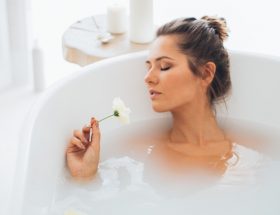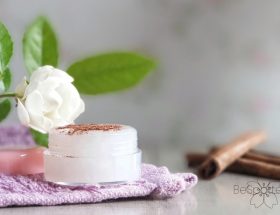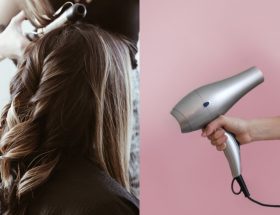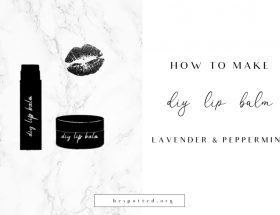This post may contain affiliate links. Any sales made through such links will reward me a small commission – at no extra cost for you!
If you are reading this, you are exposed to it right now! What exactly is this blue light, is it damaging to your skin and what can you do about it?
I’m not gonna lie – the question of blue light and its effects to the skin has been no less confusing to me than it probably is to you. On the one hand, I see beauty tools that use blue and red light and they are often recommended for treating all kinds of skin problems. On the other hand, there are products on the market labeled as “blue light protection”.
WTH? Is blue light something we should use in our skincare routines or is it something to be avoided at all costs?
This question has been bugging me for quite a while now. Especially with the pandemic and all the possible lockdowns on the horizon, it seems that our skin will be more exposed to this mysterious blue light than to the sun. It is safe to assume then that our skincare routines are going to need one or two changes, to adjust to this new reality.
And when it comes to skincare, there is a golden rule above all golden rules – when in doubt, ask a dermatologist.
For this article, I talked with Dr. Hadley King, a New York City-based board-certified dermatologist and clinical instructor of dermatology at the Weill Medical College of Cornell University. Here’s what she had to say…
What exactly is blue light and who is exposed to it?
“High-energy visible light (HEV light) is high-frequency, high-energy light in the violet/blue band from 400 to 450 nm in the visible spectrum. HEV light is all around us – it’s part of the light we can see“, Dr. King said.
“The sunlight spectrum consists of UV, visible and infrared light. Visible light accounts for 50% of the sunlight spectrum and it’s the only part of light that can be detected by the human eye.
The blue/violet band of this visible spectrum has a particularly high energy level and is known as High-energy visible light.
HEV light is primarily from the sun, but it’s also emitted by smartphones, tablets, televisions, fluorescent bulbs and computer screens. And we are all using our screens even more than usual right now!“
Sounds scary? Well, like anything else in nature, blue light also has its perks.
“Routine exposure to blue light, preferably from daylight, helps regulate our body’s sleep-wake cycle, improves our mood, keep us alert and can enhance memory,“ said Dr. King.
When it comes to our skin, though, blue light can be pretty damaging.
“HEV light penetrates into the lower layers of skin, the dermis,” said Dr. King. “It is not associated with skin cancer like UV rays are, but it can cause skin to age prematurely (photo-aging). It can also contribute to hyperpigmentation and may play a part in melasma and age spots.“
Now, that sounds pretty worrying to me. We maybe spend less time out in the sun, but even indoors we are exposed to something that accelerates the aging of our skin.
“Like UV rays, HEV light generates free radicals, or reactive oxygen species. These free radicals cause skin cells to produce enzymes that break down collagen and elastin in the skin.”
I also had to ask what the difference between this harmful blue light and the blue light that is commonly used for skin treatments is.
And according to Dr. King: “Blue LED light is often used to treat acne. It may do this by reducing activity in the sebaceous glands, or blue light may also kill bacteria that contribute to acne, Propionibacterium acnes. However, again, more research is needed to confirm that these lights are truly effective and that they produce lasting results.
Long-term safety of these light therapies remains uncertain.
The bottom line is that there aren’t yet large studies demonstrating that these lights are effective.”
Ok, so – how can we protect our skin against the blue light?
Staying away from our screens is not even an option for many of us. However, there are things we can do to diminish the harmful effect of blue light to our skin.
“One option is to install covers that block the blue light from smartphones, tablets and computer monitors – these are readily available online from companies such as EyeJust“, Dr. King advises.
Apparently, with all the time we spend staring at the screens, blue light might be damaging our vision and it can cause eye strain. At least eye protection is the primary goal of these products. But since they reduce exposure to blue light, they also help protect the skin.
“Or enable the “night mode” settings on your digital devices permanently – this significantly reduces the blue light in favor of harmless yellow light.”
As for the skincare products, there are recommendations that wearing sunscreen indoors could help protect your skin against blue light. However, not every sunscreen will effectively shield your skin against blue light.
“The chemicals used to filter UVA and UVB do not filter HEV light, therefore not all sunscreens include blue light in their standard broad-spectrum UVA/UVB coverage.“
Basically – bye bye chemical sunscreens. Physical (or mineral) sunscreens, on the other hand, can help, but only if their minerals haven’t been micronized (which is sometimes done to make that infamous white cast less visible on the skin).
“Zinc oxide and titanium dioxide can block out visible light, but when micronized, they lose this ability. Tinted iron oxide cosmetic formulations can block visible light. We think that it takes about 3.5% iron oxide to get some visible light protection.”
Also, since blue light generates free radicals that can speed up the aging of the skin, you will need lots of antioxidants to protect your skin against them.
“… Antioxidants Licochalcone A and Glycyrrhetinic Acid have been shown to work together to protect skin cells in the deeper epidermal layers from sun-induced damage. Clinical research has shown that sunscreens containing Licochalcone A offer effective and extended protection from HEV light in addition to UV.”
In the end, here are the blue light protection skin care products that Dr. King recommends:
1. EyeJust Screen Protectors
View this post on Instagram
“EyeJust Screen Protectors. I recommend blue light-blocking screen protectors like those from EyeJust. They block blue light from the source and protect the screen too.”
2. Eucerin Sun Fluid Anti-Age
View this post on Instagram
“Licochalcone A, Glycyrrhetinic Acid and Hyaluronic Acid are the active ingredients in Eucerin Sun Fluid Anti-Age SPF30 and SPF50 which have been proven to offer reliable protection from UVA and UVB rays and to combat the oxidative stress caused by HEV light.“
3. Revision Skincare’s C+ Correcting Complex 30%
View this post on Instagram
“Revision Skincare’s C+ Correcting Complex 30%. An antioxidant blend that fights against pigment resulting from free radicals from UV, pollution and HEV (blue light). And helps to support the skin’s natural production of vitamins C and E.“
4. Brush on Block powdered sunscreen
View this post on Instagram
“Brush on Block powdered sunscreen, particularly for reapplication and touch ups without messing up your makeup. It’s a great solution for people who don’t want to reapply sunscreen because they don’t want to mess up their makeup. It absorbs excess oil so it can serve a dual purpose as a finishing powder, actually extending the life of your makeup, and providing sun protection. And it’s portable and convenient and won’t leave white residue on your clothes. It’s all mineral – zinc oxide and titanium dioxide, as well as antioxidants, to protect from UVA and UVB sun damage as well as blue light and infrared A rays.“
5. Supergoop! Glowscreen Sunscreen SPF 40
View this post on Instagram
“Supergoop! Glowscreen Sunscreen SPF 40 is also a great option – it’s a hydrating primer that contains hyaluronic acid and vitamin B5 to help boost moisture in the skin, sea lavender for antioxidant protection, and cocoa peptides to help protect from blue light. And it’s vegan, cruelty free, and reef safe.”
So there you have it – all you need to know about how blue light damages the skin, what you can do about it and what some of the best blue light protection skin care products are. Also, fingers crossed this quarantine era will be over soon and we can go back to our normal lives as if the pandemic never even happened…













